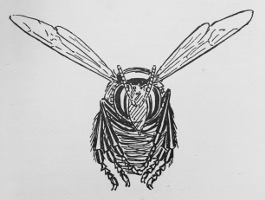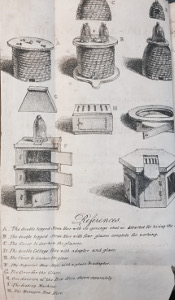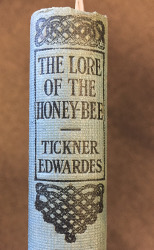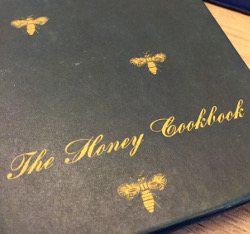The Bee Collection

Written by Louise Cowan, Trainee Liaison Librarian

Our collection of printed materials on bees and apiculture brings together the Cotton Collection and the books from the H. Malcolm Fraser Collection, supplemented by books and periodicals from the University Library’s general collections. The collection examines bees and bee-keeping from a variety of angles, providing a fascinating wealth of knowledge. Below is gathered a small selection showing the fantastic diversity of material:
Bee keeping
The London Apiarian Guide for Bee-Keepers (1823) – by John Milton [Bee Collection Fraser 148]

This short guide for bee keepers provides helpful tips on everything a budding bee-keep needs to know; from how to use the newest glass hive, how to purchase bees (the best time of year is February if you’re interested!), the type of flowers bees like best (Rosemary and Lemon Thyme) and of course, how to obtain your honey!
Bee Anatomy
The Honey Bee: Its Natural History, Anatomy, and physiology. (1890) by T. W. Cowan– [Bee Collection ADDS 05D]

Written by the then chairman of the British Bee Keeper’s Association, ‘The Honey Bee’ is a detailed guide to the science of the bee. The work features several small but detailed diagrams alongside interesting facts and anatomical descriptions.
Interestingly, I learned that bees have different types of sting; the queen generally uses hers only against a rival and is able to extract her sting much more easily than a worker bee by using a spiral motion much like drawing a corkscrew out of a cork. Worker bees are more likely to lose the lower part of their abdomen when withdrawing their sting while drones are not provided with a sting at all.
Cowan also describes how one apiarist, Stahala, had ascribed meanings to the various sounds bees make; a loud ‘Huummm’ for when the bees have a queen and their food stores are good but a ‘Dzi-Dzi’ when food stores are low or a loud ‘Dziiii’ when they’re too cold!
Bee History
Bee Lore (1916) by Tickner Edwardes– [Bee Collection ADDS 006]

Dedicated to the very same T.W. Cowan (above) Edwardes’ book of lore is a full history of bees and bee keeping. It explores bees from the Greek myth of the nymph ‘Melissa’ (meaning ‘honey bee’) who fed the baby Zeus with milk and honey; praises the fourth book of Virgil’s ‘Georgics’ where the author’s ‘love for his bees shines through,’ and comments on a small book published in 1656 ‘The Country Housewife’s Garden’ which focuses on rule of thumb methods of beekeeping for fellow cottagers.
Alongside this history, Edwardes goes on to describe the features of the hive and weaves the story of the life of a bee in a romanticised light, for example, comparing the architectural supremacy of the honeycomb to the dome of St Paul’s and the great pyramids.
Bees and Honey
Honey Cookbook (1955) – [Bee Collection Fraser 045]

Our copy of the ‘Honey Cookbook’ by Juliette Elkon was sent to Mr Fraser by the American Bee Journal in 1957. In it Elkon provides a lovely introduction to honey, which features some key bee basics. For example, did you know that flower nectar has individual flavours and, “drones and workers who can’t produce their quota of honey are thrown out to die of exposure.” It’s not easy being a Bee!
Bees have also been busy making honey for a very long time. According to Elkon, the oldest jar of honey was found “in the tomb of Queen Tyi’s parents in Egypt, where it had been placed over 3000 years ago.”
Elkon’s cookbook is full of delicious sounding recipes ranging from honey bran bread, to honey glazed hams and sugarless chocolate honey cakes. As Elkon points out, honey is much healthier than sugar too…so you won’t feel too guilty for indulging in some of those treats!
Bees in Fiction
Adventures in Hiveland (1903) by Frank Stevens [Bee Collection Fraser 048]

‘Adventures in Hiveland’ by Frank Stevens is an interesting little story following the adventures of Jackie and Vi, two young children who meet the enigmatic elf-man ‘Nameless’ who shrinks them in size until they are small enough to explore inside a Beehive and learn about the lives of the bees who live there.
Although the story has quite a sad ending and sees more untimely deaths than a ‘Game of Thrones’ it gives a fascinating insight to the life of a bee, from Queen to Drone and is full of lovely sketches of the insects!